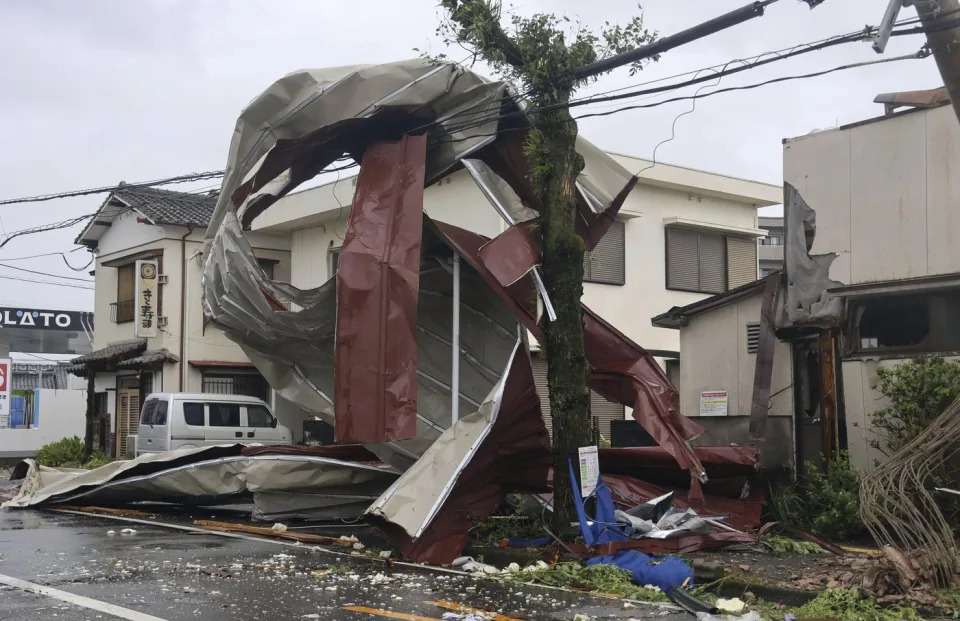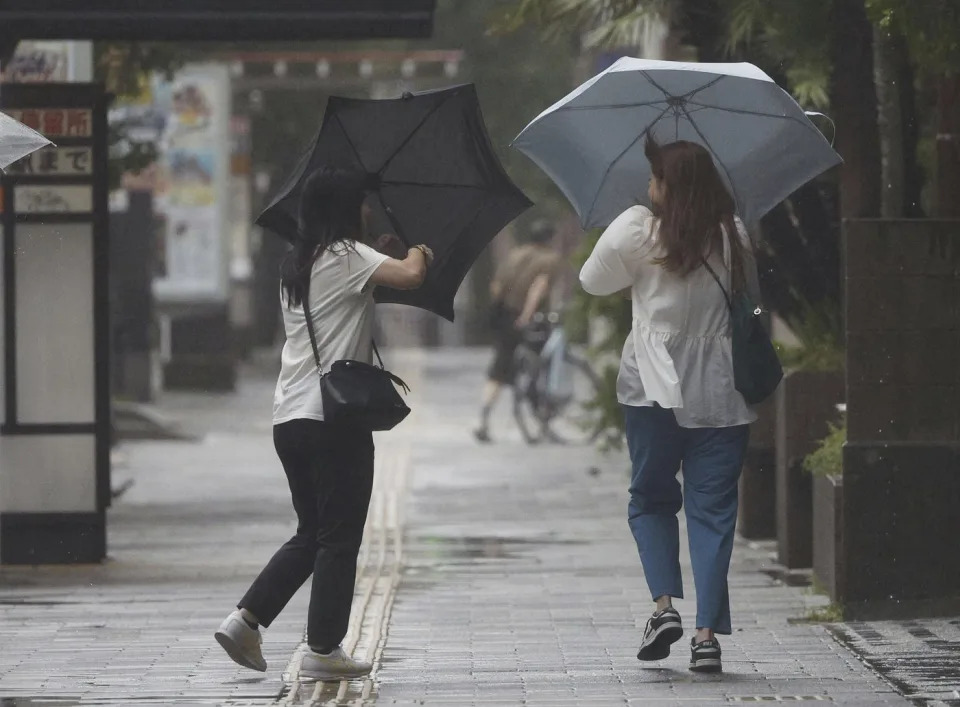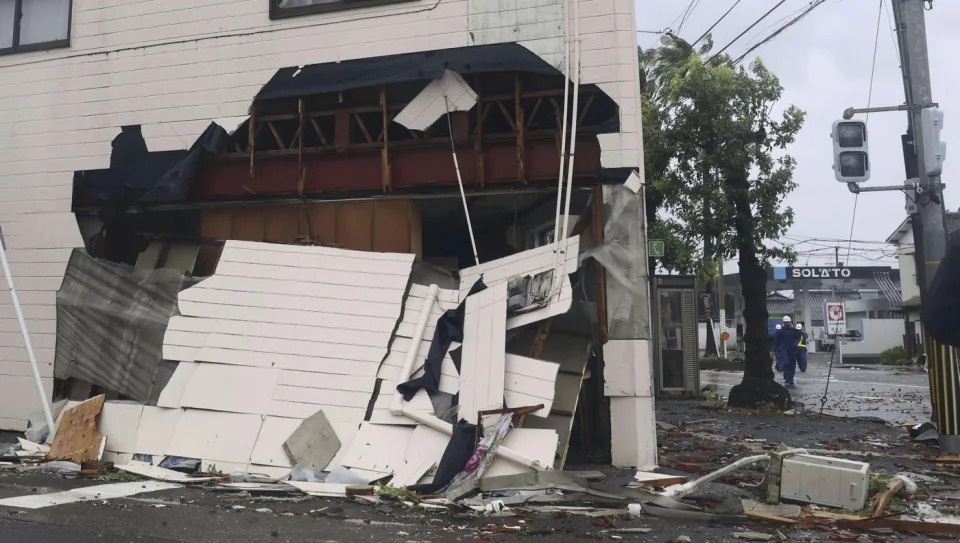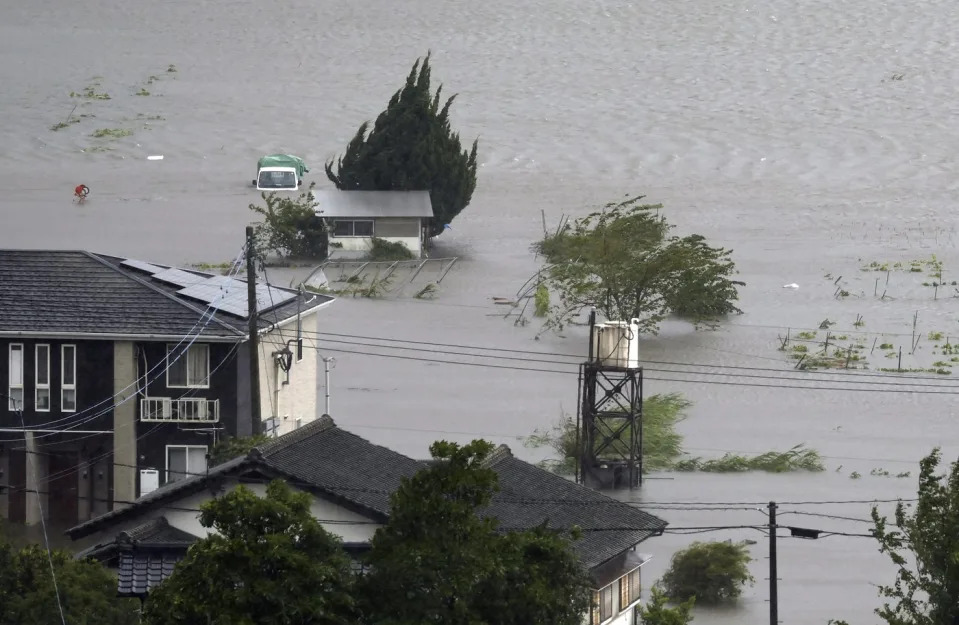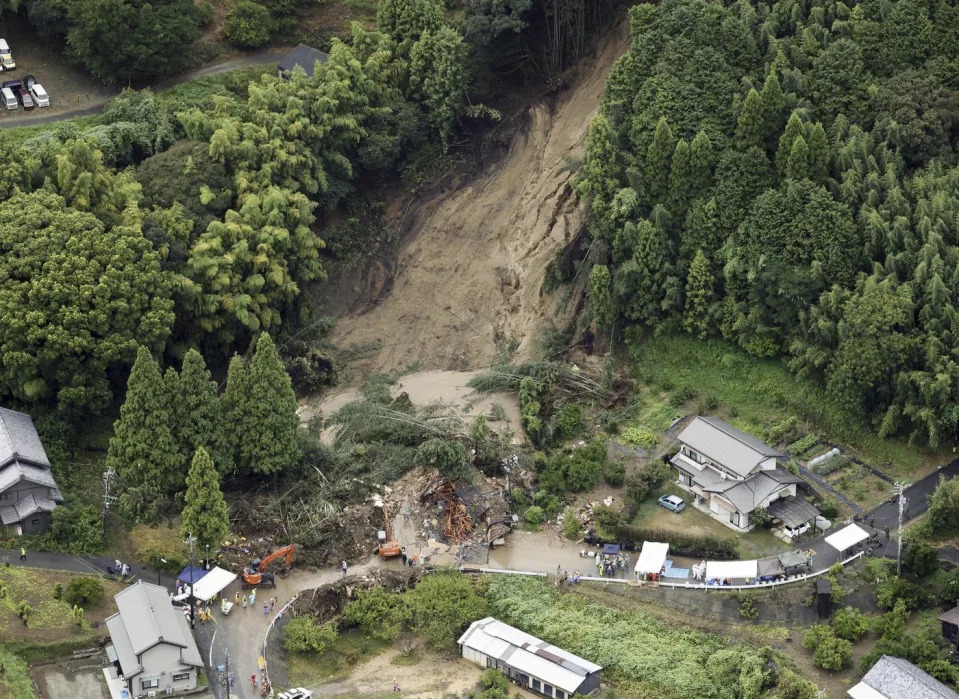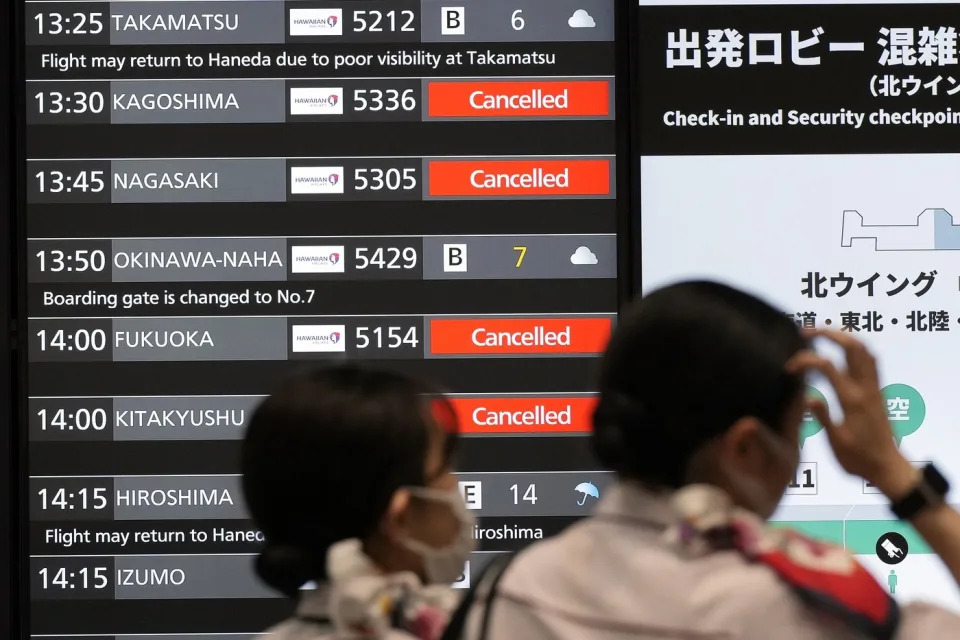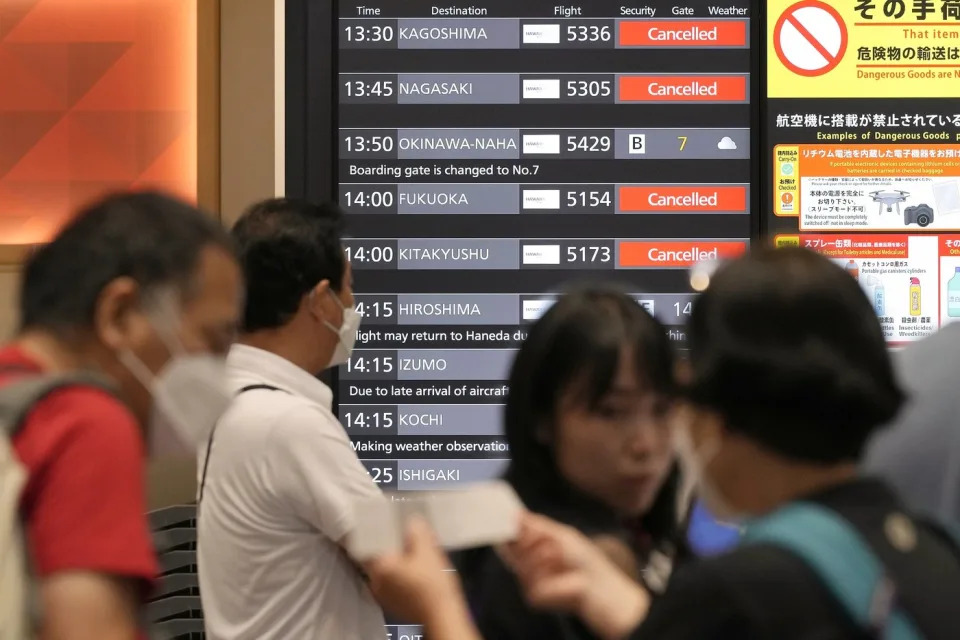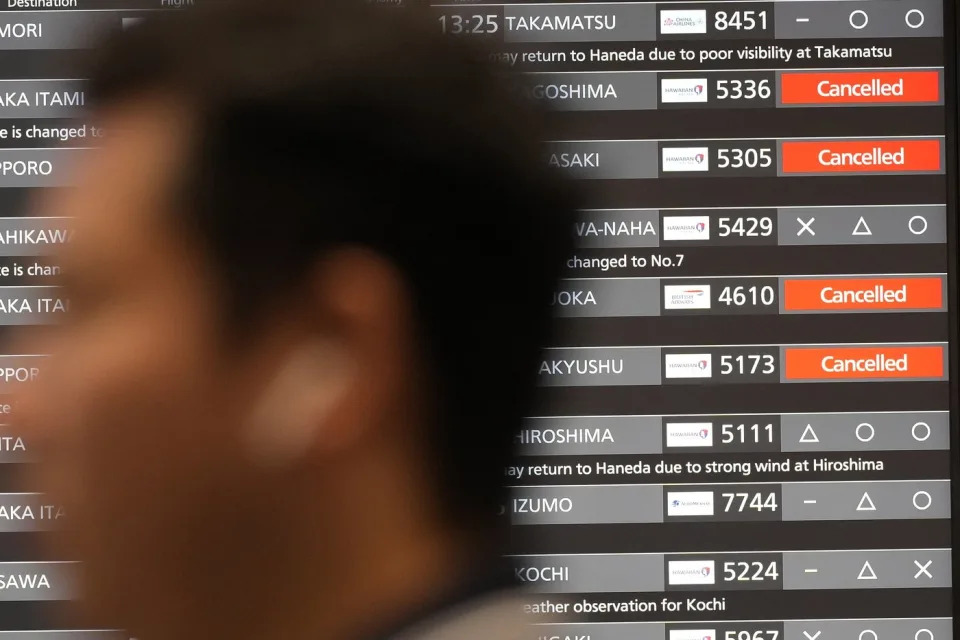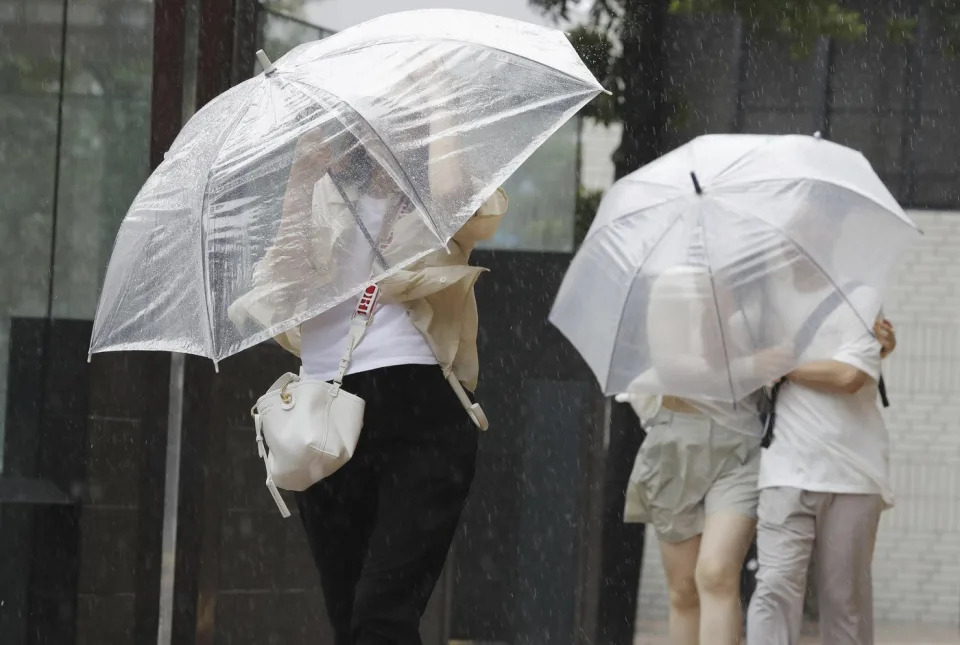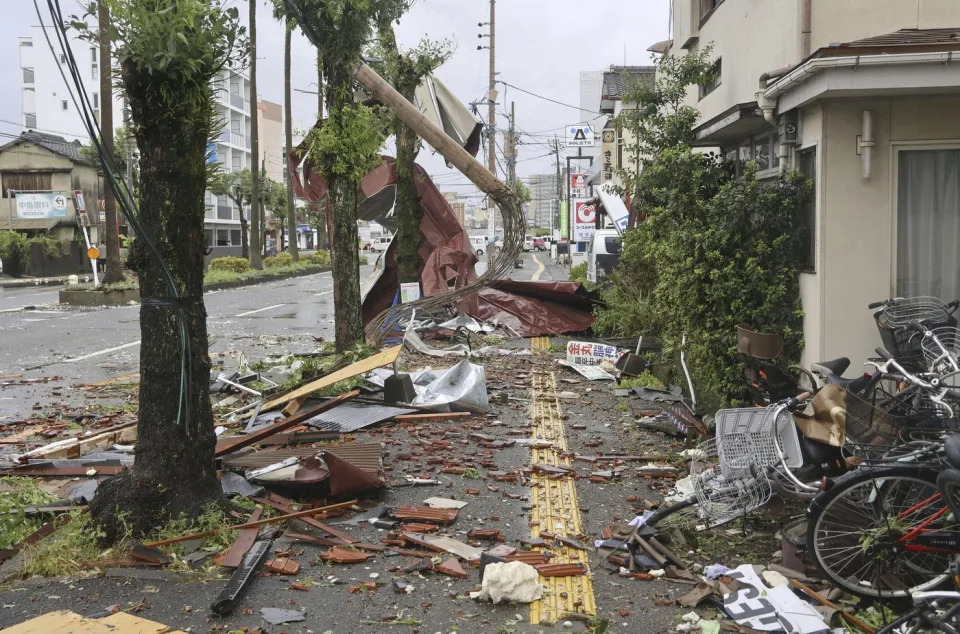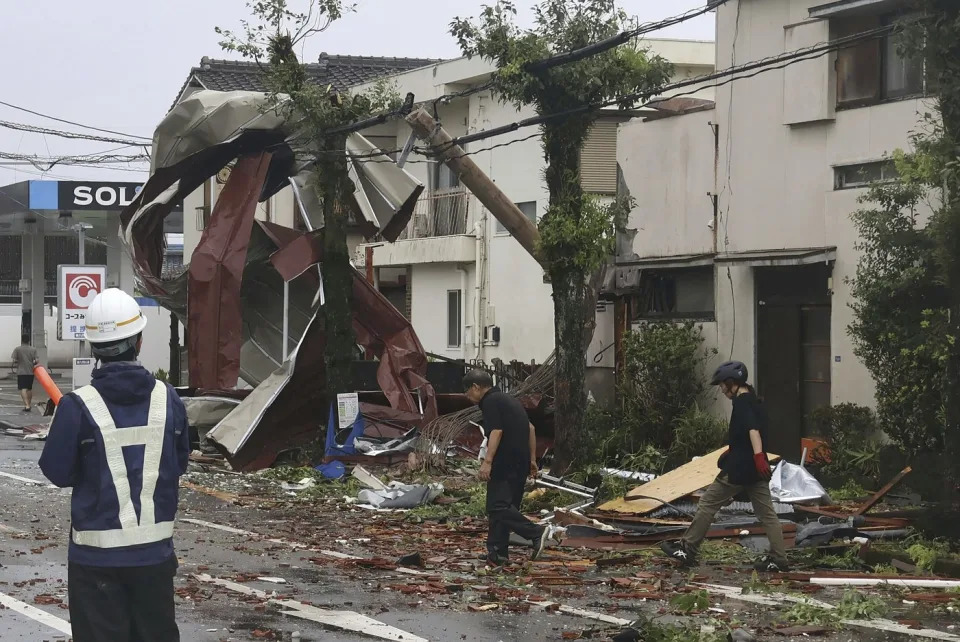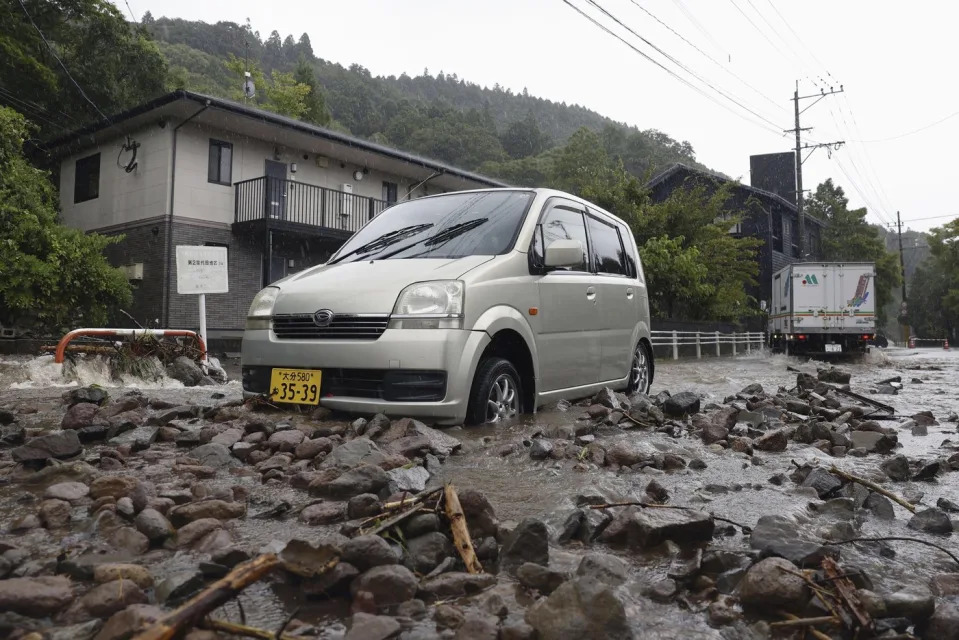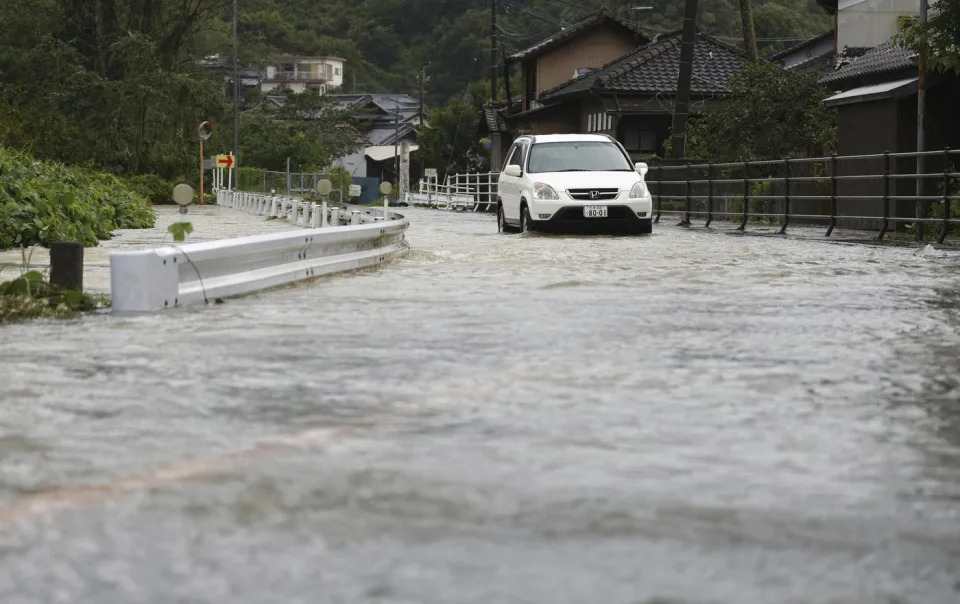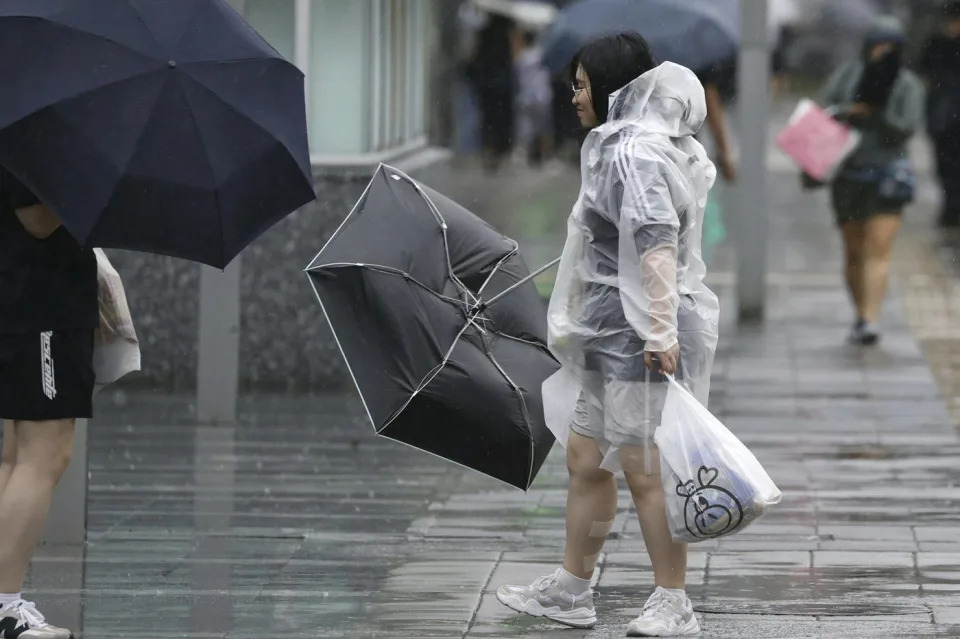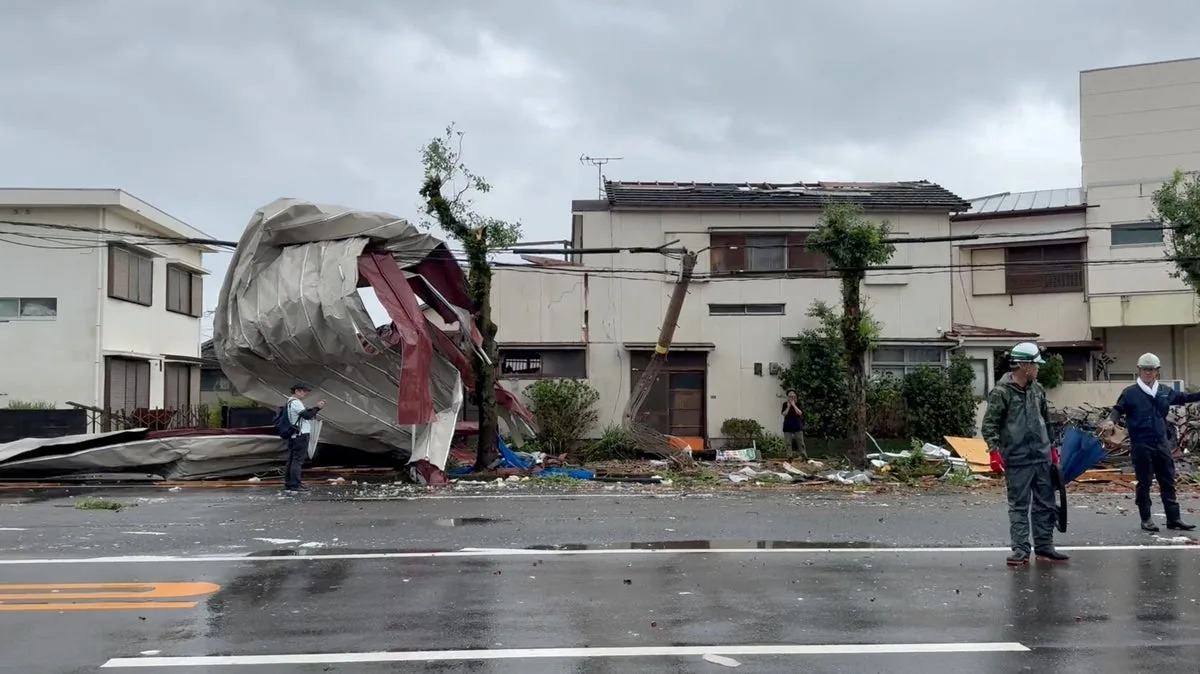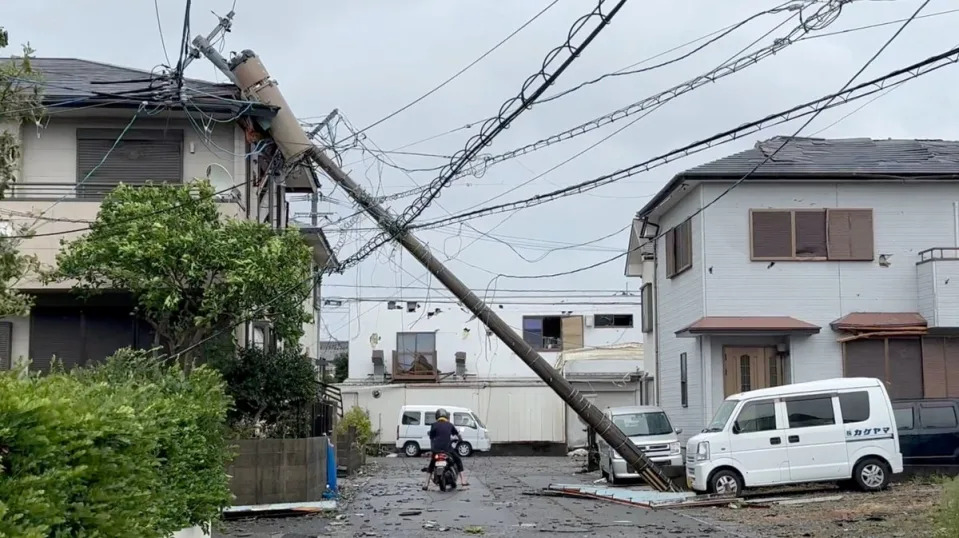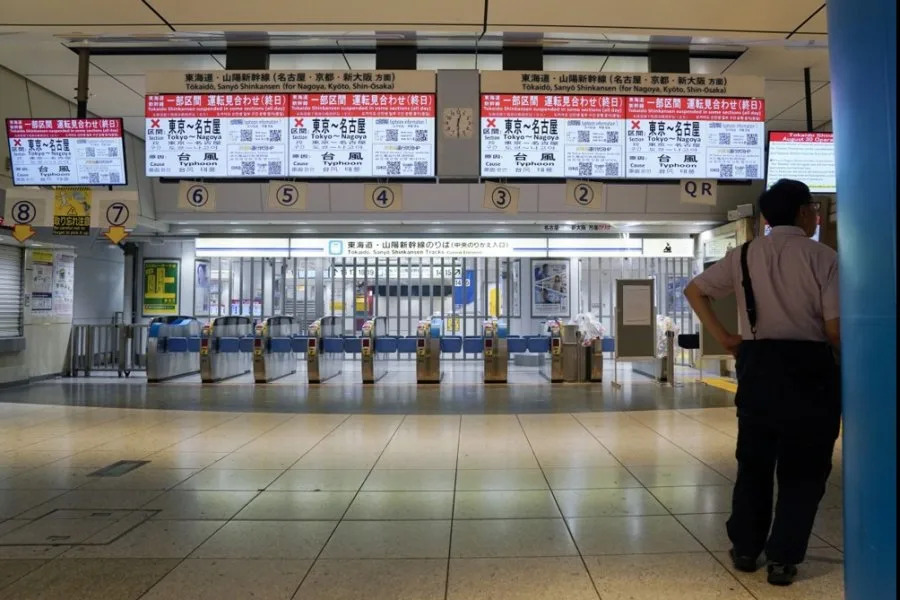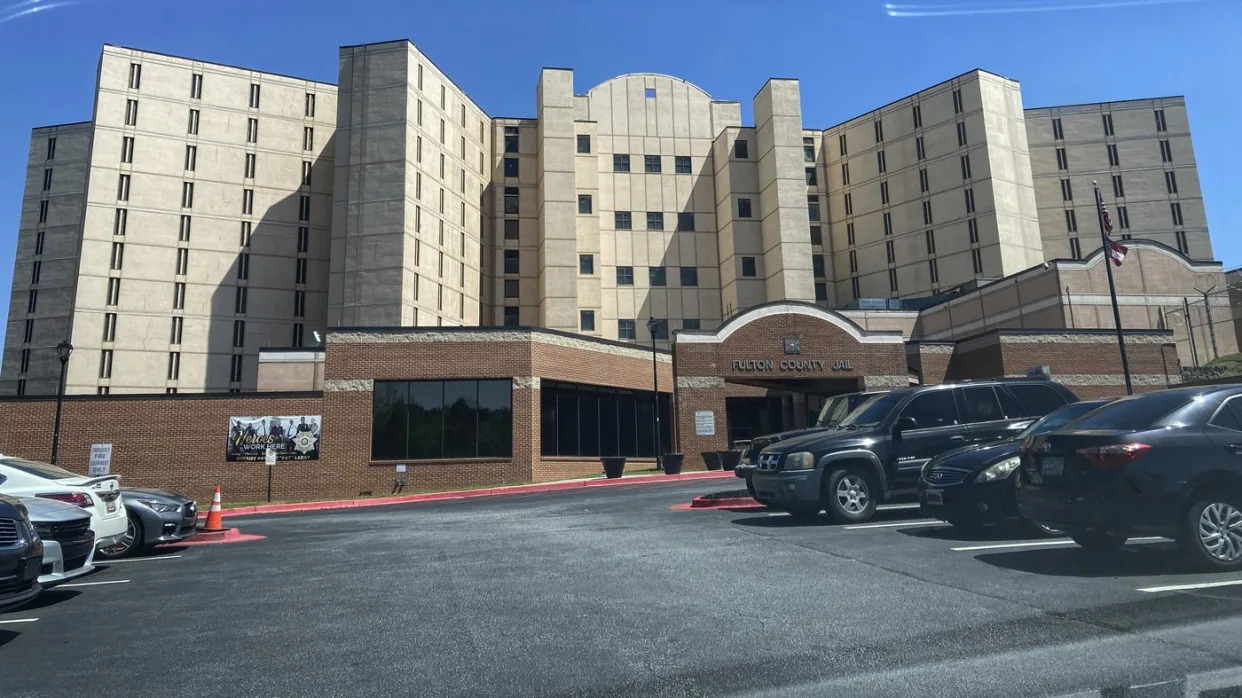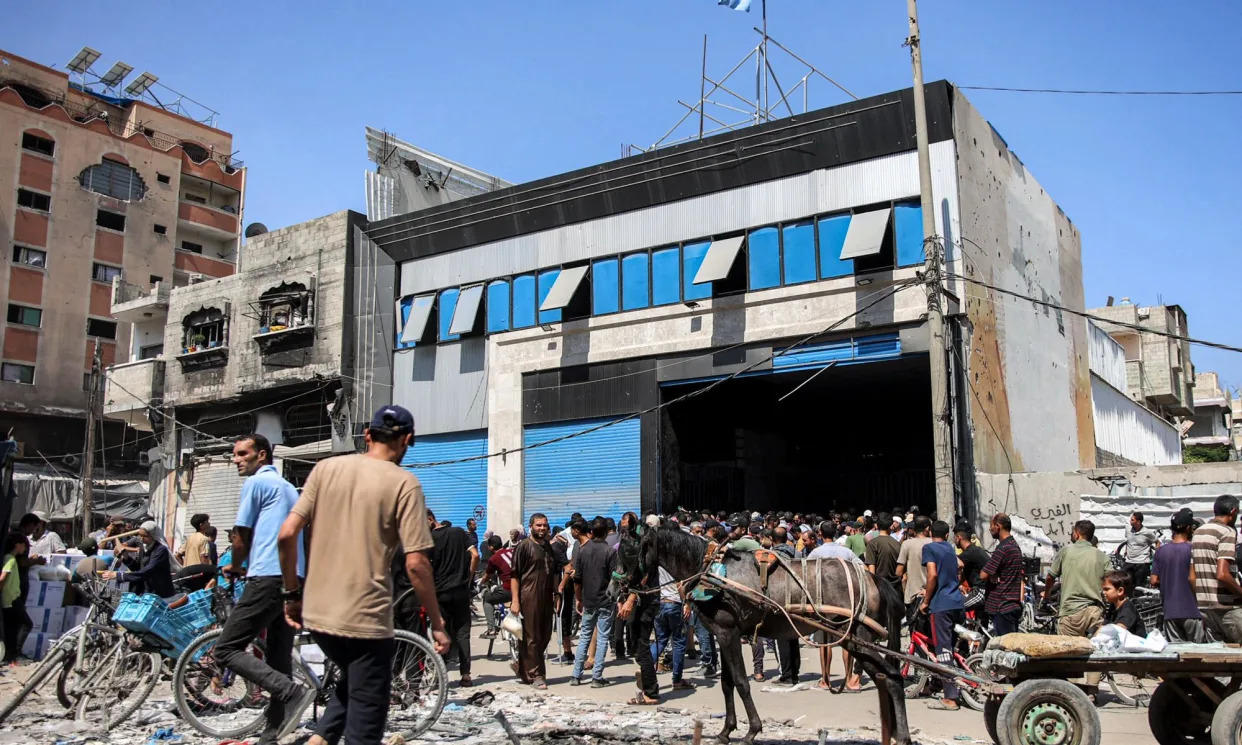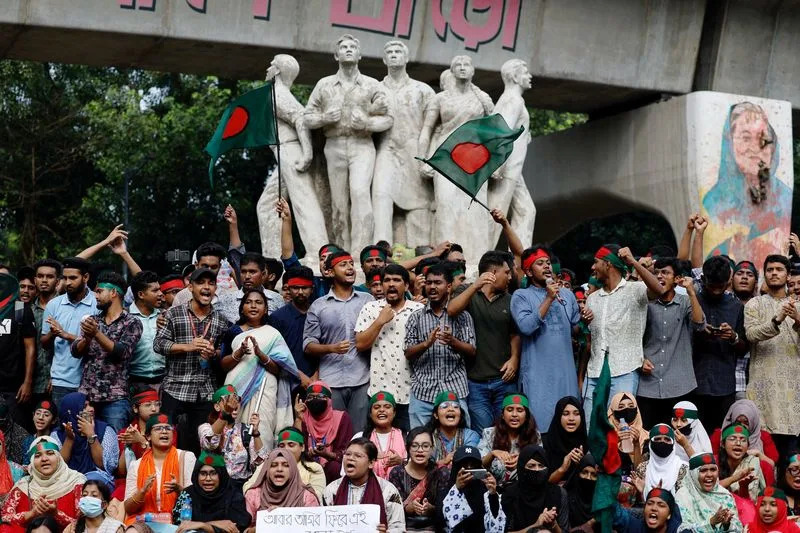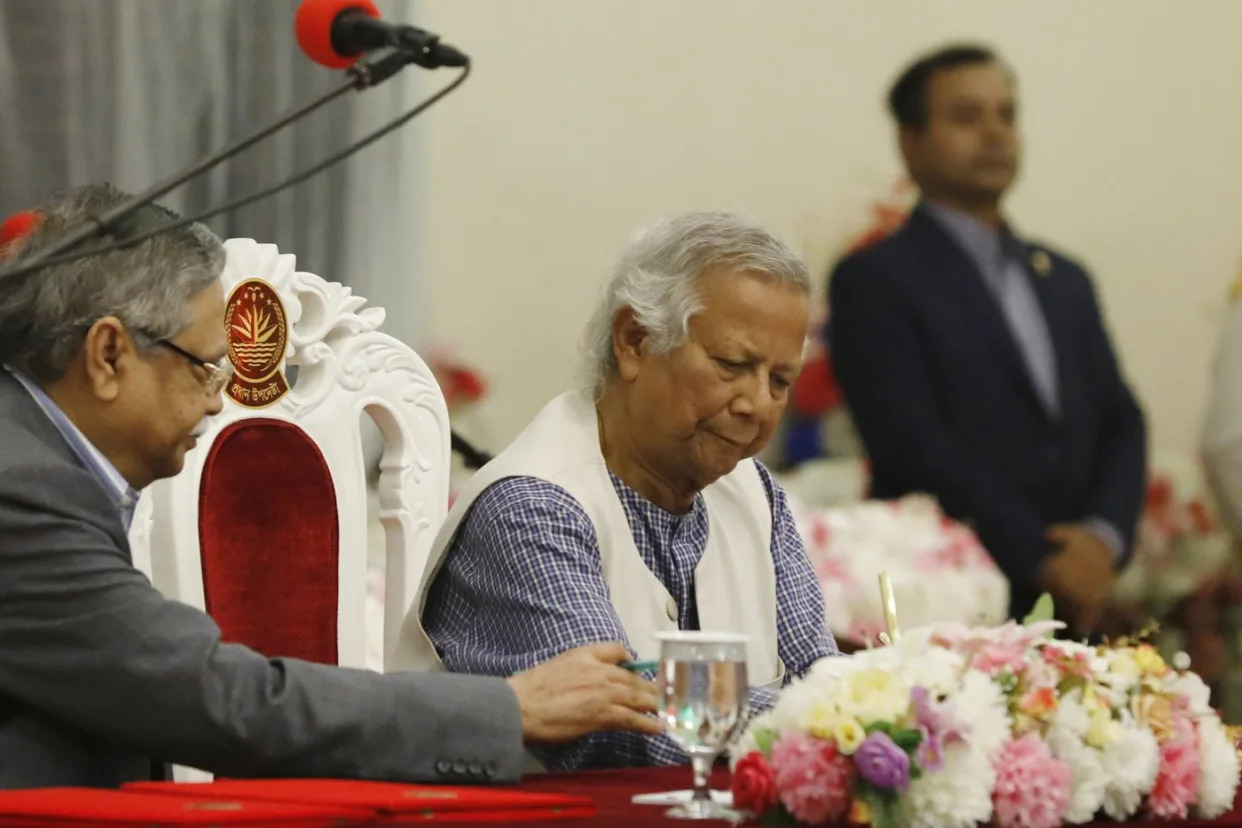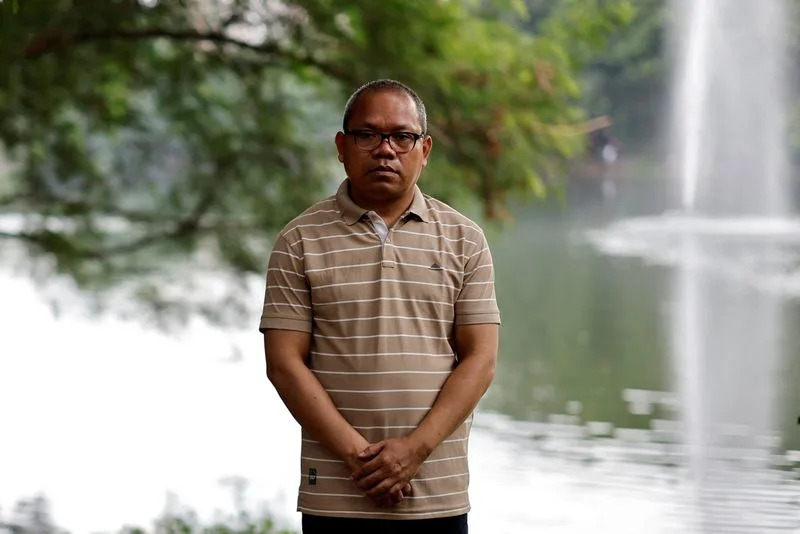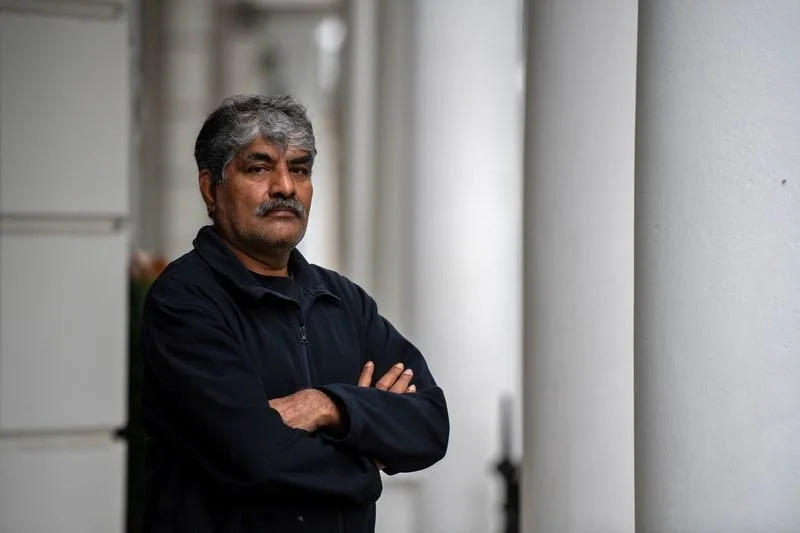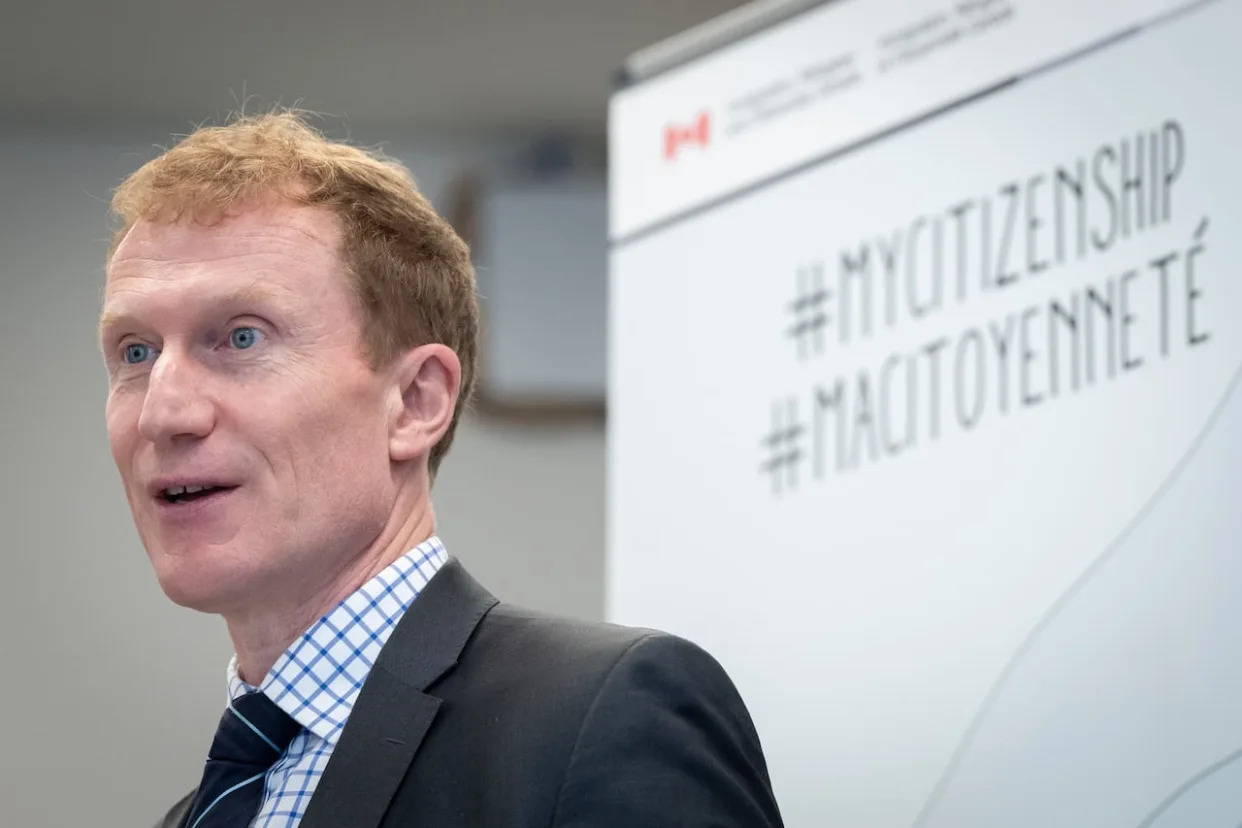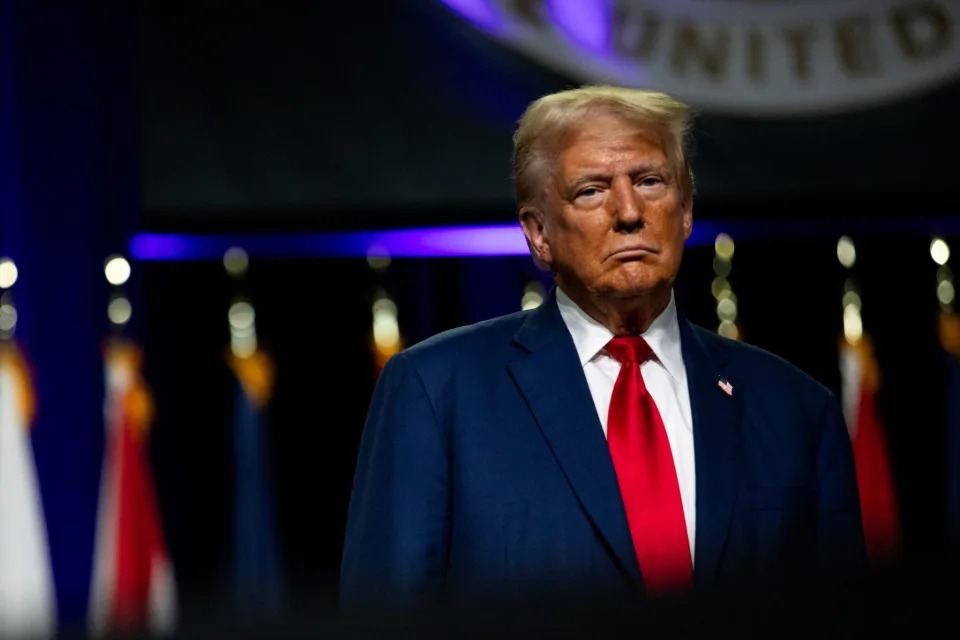David Sirota
Fri, August 30, 2024

Last week’s Democratic convention was the crescendo of an unprecedented period in American history: The Republican presidential nominee survived an assassination attempt, the Democratic president ended his reelection bid, and the vice president became her party’s nominee without a single primary vote. But the summer was equally extraordinary for how it capped off the plot that we expose in The Lever’s new investigative series Master Plan — a scheme to normalize and legalize corruption, transforming graft from a crime into the widely accepted way politics is now conducted.
In just a few months, the U.S. Supreme Court’s billionaire–coddled justices made it legal for politicians to accept gifts from beneficiaries of government favors; Donald Trump promised to enrich fossil fuel industry donors in exchange for $1 billion in campaign donations, while his running mate J.D. Vance begged a tech billionaire to bankroll their campaign; moguls funneling cash to Democrats demanded the firing of the antitrust regulator scrutinizing their businesses; both parties held corporate–sponsored conventions that prominently featured billionaires and CEOs as keynote speakers; and spending by Super PACs and other shadowy groups crossed the $1 billion mark.
In an election purporting to be about the survival of the American Way Of Life™, this miasma of transactional cash is the real threat to democracy — one harming us all.
Money is why popular, desperately needed legislation rarely ever passes — it is why both parties colluded to kill off a minimum wage increase; why Americans have no guaranteed right to medical care; why oil companies are permitted to incinerate the climate; and why corporations are allowed to fleece us in myriad ways with no consequences.
Money is why Trump has abandoned much of the anti-corporate rhetoric that once distinguished him as a heterodox conservative, and almost certainly why he has reversed himself on key policies of interest to a new crop of donors.
Money is why Vice President Kamala Harris seems more comfortable avoiding press attention and running on vague platitudes rather than endorsing initiatives that might provoke the ire of well-funded Super PACs.
Money is why Democratic leaders started telling reporters that even if Harris wins the election promising voters a crusade against corporate profiteering, her anti-price-gouging initiatives are dead on arrival in the next Congress. And money is why a new study shows most Democratic candidates up and down the ballot avoid explicitly criticizing corporations and billionaires — the forces who are creating the problems that Democrats diagnose, but who will spend those Democrats into the ground if they make too much noise.
Whatever your preferred label for this dystopia — oligarchy, plutocracy, kleptocracy — you might assume it is just a naturally occurring inevitability, but nothing could be further from the truth.
This era of corruption — in which elections are glorified auctions — was manufactured by a cadre of oligarchs and operatives whose agenda could only be implemented by deregulating the campaign finance system so that cash could short circuit democracy.
“Political Power Is Necessary”
This untold story began a half century ago amid a golden age of democratic reforms. As America’s government was responding to public discontent by creating Medicare, Medicaid, environmental regulation, and a war on poverty, a genteel tobacco industry lawyer authored a 1971 manifesto sounding an alarm.
In his now-famous memo, the soon-to-be Supreme Court justice Lewis Powell cast corporations and oligarchs as persecuted victims, and urged them to use their outsized resources to assume “a broader and more vigorous role in the political arena” to halt a government becoming too responsive to popular demands.
“In terms of political influence with respect to the course of legislation and government action, the American business executive is truly the ‘forgotten man,’” Powell wrote. “This is the lesson that political power is necessary; that such power must be assiduously cultivated; and that when necessary, it must be used aggressively and with determination — without embarrassment.”
Some have cast Powell’s blueprint as little more than a 1970s version of a meaningless Reddit rant rather than the foundational text that some liberals believe it to be. But if anything, the significance of Powell’s screed has been understated.
Documents unearthed by The Lever show that in response to the memo, leaders of the country’s most powerful corporations organized task forces to implement its directives. One of their goals was deregulating the campaign finance system. Why? Because they understood that in a properly functioning one-person-one-vote democracy, they would never be able to gain control of the political system and enact their self-enriching, wealth-concentrating agenda. They knew that to get their way, they must be allowed to buy elections, legislation, court rulings, and public policy.
And so in short order, corporations and moguls inspired by Powell began funding think tanks, political advocacy organizations, and conservative law firms — and victories followed.
First, with the support of conservative philanthropist John Olin’s political machine, Congress quietly added loopholes to the post-Watergate anti-corruption laws allowing for the explosion of corporate political action committees that could buy legislators.
Then in a lawsuit masterminded by American Enterprise Institute legal activists Ralph Winter and John Bolton (yes, that John Bolton!) — and stealthily boosted by then-Solicitor General Robert Bork — conservatives convinced the Supreme Court to endorse a radical legal doctrine equating money with constitutionally protected speech.
Soon after, Powell successfully lobbied his fellow justices to extend those free speech rights to corporations aiming to spend big money to buy elections.
These early wins unleashed a tidal wave of corporate money flooding into politics, which birthed an era of neoliberal tax, deregulatory, and anti-union policies, just as the master planners wanted. It also delivered an attendant epoch of corruption scandals, from Abscam, to the Keating Five, to Enron, to Jack Abramoff and the K Street Project.
The throughline in each sordid episode was money being used to subvert democracy — in specific, to pressure elected officials to use their power to enrich donors at the expense of voters.
Not surprisingly, the influence-peddling imbroglios coincided with other spectacles of institutionalized corruption — the insurance industry’s political spending killed universal health care initiatives and replaced them with a system of government subsidies; the fossil fuel industry’s political spending killed climate legislation and got the greenlight for record production; and Wall Street’s political spending killed New Deal regulations that might have prevented the financial crisis.
With money politics ascending, wealth concentrated, government shrunk, the working class was pulverized, and corporations gained control. At the twilight of the 20th century, Powell’s mission seemed on a glidepath.
Reform And Then Collapse
But amid this grotesquerie, some finally fought back — most prominently and unexpectedly, a scandal-plagued John McCain.
After being humiliated as one of the Keating Five who pressured federal banking regulators on behalf of a donor, the Arizona senator adopted the zeal of a convert to the anti-corruption cause. He waged a yearslong battle for legislation to restrict unlimited corporate spending on politics, eventually using an insurgent presidential bid to shame George W. Bush — the personification of Big Money politics — into signing the first campaign finance reform law in a generation.
But while the Supreme Court briefly upheld that legislation in 2003, it was a short-lived respite.
The Powell Memo had urged corporations and business leaders to fund political infrastructure focused on changing the judiciary. When the seats of Justices William Rehnqist and Sandra Day O’Connor opened up in 2005, that well-financed machine made sure the Bush administration replaced them not with moderates, but with archconservatives committed to the master plan.
Led by the Federalist Society’s Leonard Leo, the conservative legal movement ran a multimillion-dollar campaign to install archconservative John Roberts. The same master planners then ran a campaign to convince Senate Republicans to block potential moderate nominee Harriet Miers, prompting Bush to replace her with the far-right Samuel Alito.
In the wake of the duo’s confirmations, liberals consoled themselves with hopes that the seemingly reasonable Justice Anthony Kennedy would maintain a pragmatic equilibrium on the high court.
Kennedy, though, was much like his predecessor, Powell. He cut a moderate profile, but had long been an opponent of tough campaign finance and anti-corruption laws — hardly surprising considering his early career was spent as a corporate lobbyist doling out cash to lawmakers, and as an author of Ronald Reagan’s first anti-tax ballot measure in the Powell Memo years.
And so when one of this generation’s most effective campaign finance deregulators, attorney James Bopp, manufactured a case about a Hillary Clinton documentary, the master plan sprung into action. Rather than crafting a narrow decision, Roberts ordered the case to be reargued on more precedential questions and then assigned the opinion to Kennedy, who authored the expansive 2010 Citizens United ruling that overturned McCain’s campaign finance law.
Building directly off Powell’s earlier ruling on corporate speech, the decision fully legalized unlimited spending in elections, insisting that putatively independent expenditures “do not give rise to corruption or the appearance of corruption.”
As election spending by billionaires and corporations subsequently skyrocketed, the same legal machine forged by the Powell Memo manufactured cases designed to prompt the court to deliver additional rulings encouraging even more corruption.
In one such case, conservative justices shamelessly used a mid-20th-century court ruling that protected civil rights groups from Jim Crow thugs to protect billionaire- and corporate-funded dark money groups from disclosing their donors to regulators responsible for enforcing nonprofit laws. Another string of high court rulings then overturned law enforcement officials’ corruption convictions and gutted longstanding federal bribery statutes.
As for the government’s remaining anti-corruption regulators, the master planners made sure they were also defanged: Republicans packed the Federal Election Commission with appointees opposed to enforcing even the most minimal campaign finance laws, and they have bullied the Internal Revenue Service out of policing dark money groups.
“It Doesn’t Have Any Effect On Me”
In the wake of this rampage, master planners today typically argue that everything is fine and democracy is safe, because money supposedly does not buy election results. They cite the occasional outspent election winner or overspending election loser as proof that cash does not determine political outcomes.
But those are rare exceptions in a country where those who spend the most are able to most repetitiously communicate with voters — and therefore almost always win. And that money almost always comes with big donors’ transactional expectations.
“People say, ‘Oh, it doesn’t have any effect on me,'” said now-retired Rep. Barney Frank in a candid interview a few years after Citizens United. “Well if that were the case, we’d be the only human beings in the history of the world who on a regular basis took significant amounts of money from perfect strangers and made sure that it had no effect on our behavior.”
Data about legislative action buttresses Frank’s point. One study found that for every $1 of corporate donations, a business gets more than $6 of state tax breaks. Another study found a correlation between unlimited campaign spending and a reduction in corporate taxes. Still another study found that the more freely corporations are allowed to spend in elections, the more likely lawmakers are to pass laws that protect corporate management.
The same holds true for legislative and political inaction.
Health insurers’ cash explains why Americans have no guaranteed right to medical care, and pharmaceutical industry cash explains why we continue to pay the world’s highest prices for medicine.
Wall Street cash explains why private equity tax loopholes that could be closed with the stroke of a pen remain open, and why bankers who cratered the global economy continued to reap bailouts rather than prosecutions.
Rail industry cash explains why Congress has refused to pass rail safety legislation after the East Palestine disaster, and Boeing cash explains why the company gets a slap on the wrist and even more government contracts after its deadly crashes.
The list of such examples is endless, ultimately confirming Princeton and Northwestern researchers’ conclusion: “Economic elites and organized interest groups play a substantial part in affecting public policy, but the general public has little or no independent influence” over the government operating in its name.
Even worse, an electorate pining for reform is typically given few political choices that promise any escape from it.
The 2024 campaign exemplifies the sad reality. On one side is the choice are policy-free vibes that pretend working-class voters’ and elite donors’ conflicting interests can both coexist under the same big tent. On the other side is a 900-page manifesto promising an explicit corporate takeover and final gutting of whatever’s left of campaign finance laws — all written by a group whose seed funding was originally prompted by the Powell Memo.
“The Election Of Federal Officials Is Not A Private Affair”
In the two years it has taken to report out Master Plan, our reporters discovered documents illustrating just how deliberate the attack has been on America’s anti-corruption and campaign finance laws. Beholding a never-before-unearthed 1971 photo of Philip Morris’ CEO giving Powell a judicial robe emblazoned with corporate logos, you can’t help but see the image as a prophecy of all that would come to pass.
And yet even as we live in Powell’s world and democracy teeters amid this year’s multibillion-dollar election extravaganza, there is a silver lining: The fact that this present reality came from a plan means it can be reversed, especially because the solutions are so obvious and straightforward.
First and foremost, every political jurisdiction can pass laws forcing the disclosure of those who spend money to influence elections and policy. States have already started doing this, and the federal government could, too. Sen. Sheldon Whitehouse (D-R.I.) has already written the DISCLOSE Act, which was co-sponsored by Harris, who as California attorney general tried to force dark money groups to disclose their donors. In 2025, she could be in a position to make a disclosure bill the law of the land.
This shouldn’t be a partisan or ideological issue: After all, the Citizens United decision explicitly touted the necessity of robust transparency, and even ultraconservative Justice Antonin Scalia agreed with such notions, writing in a separate case that “requiring people to stand up in public for their political acts fosters civic courage, without which democracy is doomed.”
Beyond transparency, there is what Sen. Bernie Sanders (I-Vt.) had the temerity to bellow at the Democratic convention’s corporate suites.
“Billionaires in both parties should not be able to buy elections, including primary elections,” he said in his keynote address last week. “For the sake of our democracy, we must overturn the disastrous Citizens United Supreme Court decision and move toward public funding of elections.”
Immediately after Sanders made that demand, the DNC handed the microphone to Illinois Gov. J.B. Pritzker, who bragged about being a billionaire, and then to the chairman of a venture capital firm for a speech insisting that Harris will be “both pro-business and pro-worker” — as if there never needs to be a choice between the two. It was a scheduling juxtaposition that undoubtedly reassured the convention’s corporate sponsors that (to use Joe Biden’s donor-speak) nothing will fundamentally change. But it should.
Overturning Citizens United will be a slow constitutional amendment process — but one that’s already making progress, and could over time generate some bipartisan support.
The latter is already happening in states and cities across the country. It may seem like a pipe dream at the federal level, but remember: The idea twice came within a hair of happening in response to corruption scandals that rocked Washington.
“The election of federal officials is not a private affair. It is the foundation of our government,” said the Senate report that accompanied the chamber’s passage of a public financing bill in the mid-1970s. “We shall not finally come to grips with the problems except as we are prepared to pay for the public business of elections with public funds.”
By today’s standards, such a clear statement from Congress’s upper chamber seems unfathomable — but it didn’t happen because senators were more altruistic back then. They came so close to game-changing anti-corruption reform because the public was so enraged by the Watergate scandal that their representatives felt the need to try to act.
Watching convention-goers stroll the United Center halls and barely notice the corporate brands advertising their ownership of the Democratic Party, it is difficult to know if such rage can be mustered anymore. Even as today’s corruption makes the scandals of the 1970s seem quaint, such disgust seems absent from an electorate inured to the dominance of money politics.
Whereas the Watergate scandal prompted the first major campaign finance reforms of the 20th century, and the fundraising excesses of the 1980s and 1990s prompted McCain’s crusade against the master plan, today’s corruption seems on the verge of becoming like the water in David Foster Wallace’s parable about fish — many are so accustomed to swimming in it, they have stopped noticing it. Worse, some even demand contrition from those who dare to identify it as a problem.
In 2020, there was Sanders feeling compelled to apologize for a surrogate invoking the word “corruption” when rightly criticizing Joe Biden’s all-too-close relationship with corporate donors.
In 2024, there was Rep. Katie Porter being vilified for pointing out that billionaires spent millions to “rig” her primary contest.
As this election season heads into its final two months and produces a new president, there will be even more such pressure to keep quiet, conform, and insist on repentance from those who dare mention the corruption that America is drowning in.
Succumbing to that code of silence is exactly what the master planners want — and exactly what will end whatever’s left of democracy.
